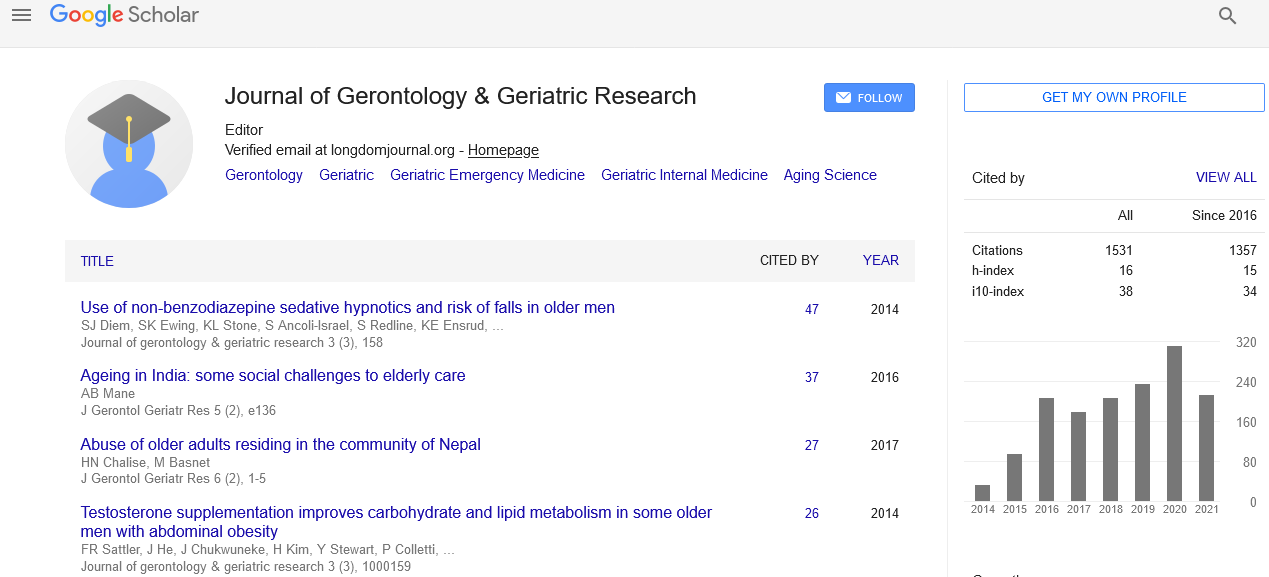PMC/PubMed Indexed Articles
Indexed In
- Open J Gate
- Genamics JournalSeek
- SafetyLit
- RefSeek
- Hamdard University
- EBSCO A-Z
- OCLC- WorldCat
- Publons
- Geneva Foundation for Medical Education and Research
- Euro Pub
- Google Scholar
Useful Links
Share This Page
Journal Flyer

Open Access Journals
- Agri and Aquaculture
- Biochemistry
- Bioinformatics & Systems Biology
- Business & Management
- Chemistry
- Clinical Sciences
- Engineering
- Food & Nutrition
- General Science
- Genetics & Molecular Biology
- Immunology & Microbiology
- Medical Sciences
- Neuroscience & Psychology
- Nursing & Health Care
- Pharmaceutical Sciences
Abstract
Pleural Effusion Following Rib Fractures in the Elderly: Are We Being Aggressive Enough?
Alicia J Mangram, Nicolas Zhou, Jacqueline Sohn, Phillip Moeser, Joseph F Sucher, Alexzandra Hollingworth, Francis R Ali-Osman, Melissa Moyer, Van A Johnson Jr and James K Dzandu
Background: Delayed pleural effusion (DPF) is an understudied complication of rib fractures. Many DPF are not treated unless symptomatic, however, the consequences of DPF in the elderly has not been discussed in current literature. We sought to investigate the characteristics of rib fracture DPF, its associated outcomes, and implications for management in geriatric trauma patients. Methods: A retrospective study was conducted from January 2012 to May 2014 on patients with rib fractures at a single Level-1 Trauma Center. Development of DPF was based on X-ray studies. Independent variables were: demographics, mechanism of injury, trauma factors, rib fracture severity, and laboratory values. Patient outcome variables were: ICU/hospital length of stay (LOS), and discharge disposition. Student�s s t-test, chi-square test, logistic regression analysis was used for data analysis. Results: 373 patients were identified with an average age of 73.6 years, 89.5% were white, 54.2% were male, and 54.4% of patients were involved in motor vehicle collisions. On average, 4.8 ribs were broken with an average ISS 13.9. 40.8% of patients developed DPF. We found statistically significant independent predictors for DPF as >6 rib fractures, flail chest, left sided fractures, bilaterality, motor vehicle collision (MVC, ISS >15, chest tube placement, hemothorax, pneumothorax, pulmonary contusion, WBC =11.3, glucose =142, albumin <3.5. Multivariate logistic regression derived a predictive Model: Loge(P/1-P) = -2.135 + 0.962 (MVC) + 0.831 (Chest tube placement) + 0.926 (pulmonary contusion) + 0.620 (rib frx = 6) + 0.828 (Albumin <3.5) + 0.543 (left sided frx), where p is the probability of developing DPF. Conclusion: The study suggests that early aggressive evaluation of the elderly trauma patient with rib fractures for delayed pleural effusion followed by an appropriate treatment (thoracentesis) would improve outcomes including decreased length of stay and favorable discharge home. A further avenue for inquiry would be to conduct comparative research between groups of elderly asymptomatic patients to determine whether their prognosis improves as opposed to those asymptomatic who do not receive treatment.


